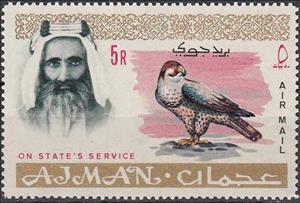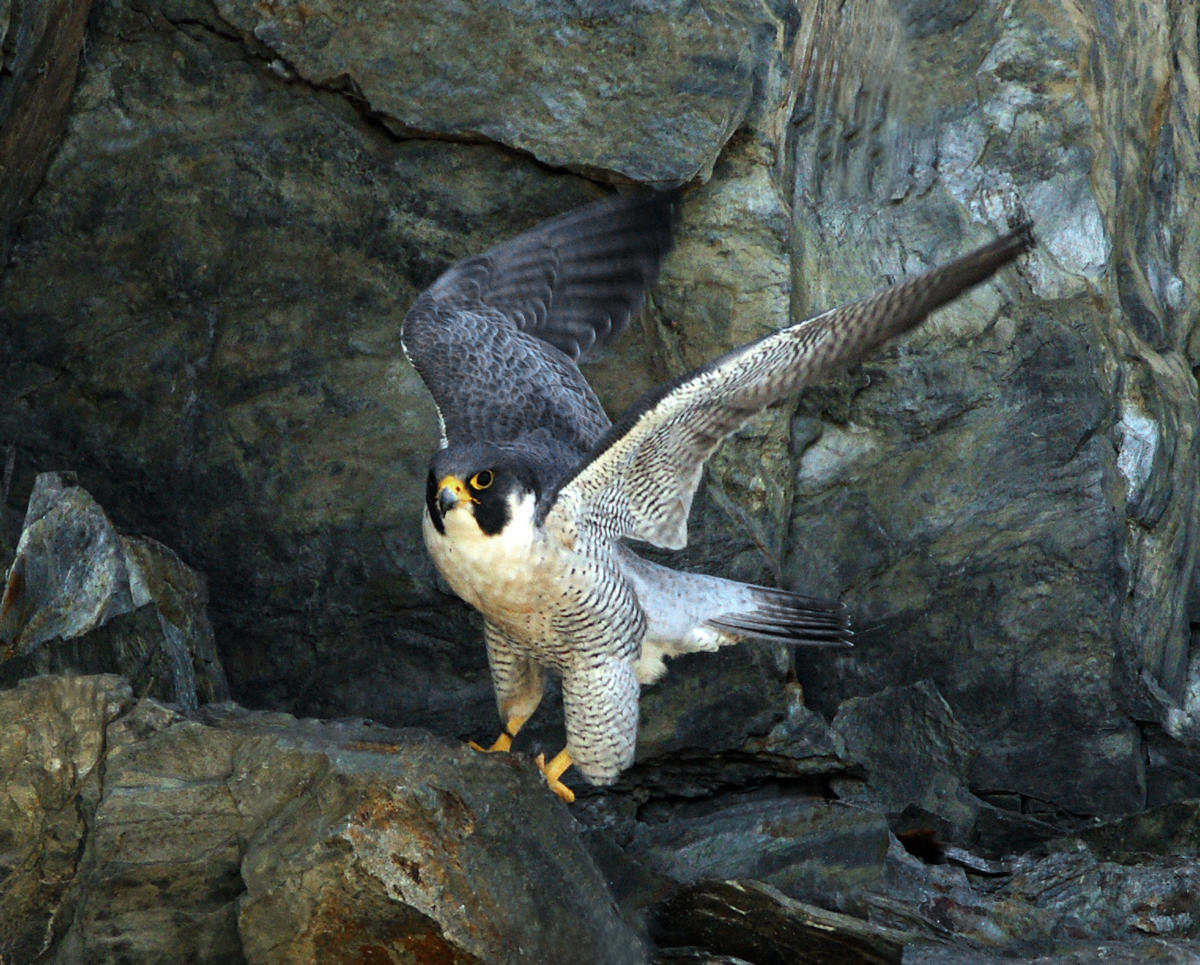Stamp: Shaikh Rashid and Lanner Falcon (Falco biarmicus) (Ajman 1965)
Shaikh Rashid and Lanner Falcon (Falco biarmicus) (Ajman 1965)
18 December (Ajman ) within release Native fauna goes into circulation Stamp Shaikh Rashid and Lanner Falcon (Falco biarmicus) face value 5 Gulf rupee
| Stamp Shaikh Rashid and Lanner Falcon (Falco biarmicus) in catalogues | |
|---|---|
| Michel: | Mi: AJ D9A |
| Stamp Number: | Sn: AJ CO4 |
| Yvert et Tellier: | Yt: AJ SA4 |
Stamp is square format.
Also in the issue Native fauna:
- Stamp - Sheik Rashid and White Stork (Ciconia ciconia) face value 2;
- Stamp - Sheik Rashid and White-eyed Gull (Larus leucophthalmus) face value 3;
- Stamp - Sheik Rashid and White stork (Ciconia ciconia) face value 2;
- Stamp - Sheik Rashid and White Stork (Ciconia ciconia) face value 2;
- Stamp - Shaikh Rashid and Lanner Falcon (Falco biarmicus) face value 5;
- Stamp - Sheik Rashid and White-eyed Gull (Larus leucophthalmus) face value 3;
- Stamp - Sheik Rashid and White-eyed Gull (Larus leucophthalmus) face value 3;
- Stamp - Shaikh Rashid and Lanner Falcon (Falco biarmicus) face value 5;
- Stamp - Sheik Rashid and White Stork (Ciconia ciconia) face value 2;
- Stamp - Sheik Rashid and White Stork (Ciconia ciconia) face value 3;
- Stamp - Sheikh Rashid bin Humaid Al Nuaimi III and Jewell fish face value 75;
Stamp Shaikh Rashid and Lanner Falcon (Falco biarmicus) it reflects the thematic directions:
Animals are multicellular, eukaryotic organisms of the kingdom Animalia (also called Metazoa). All animals are motile, meaning they can move spontaneously and independently, at some point in their lives. Their body plan eventually becomes fixed as they develop, although some undergo a process of metamorphosis later on in their lives. All animals are heterotrophs: they must ingest other organisms or their products for sustenance.
Birds (Aves), a subgroup of Reptiles, are the last living examples of Dinosaurs. They are a group of endothermic vertebrates, characterised by feathers, toothless beaked jaws, the laying of hard-shelled eggs, a high metabolic rate, a four-chambered heart, and a strong yet lightweight skeleton. Birds live worldwide and range in size from the 5 cm (2 in) bee hummingbird to the 2.75 m (9 ft) ostrich. They rank as the class of tetrapods with the most living species, at approximately ten thousand, with more than half of these being passerines, sometimes known as perching birds. Birds are the closest living relatives of crocodilians.
Birds of prey or predatory birds, also known as raptors, are hypercarnivorous bird species that actively hunt and feed on other vertebrates (mainly mammals, reptiles and smaller birds). In addition to speed and strength, these predators have keen eyesight for detecting prey from a distance or during flight, strong feet with sharp talons for grasping or killing prey, and powerful, curved beaks for tearing off flesh. Although predatory birds primarily hunt live prey, many species (such as fish eagles, vultures and condors) also scavenge and eat carrion
Adult falcons have thin, tapered wings, which enable them to fly at high speed and change direction rapidly. Fledgling falcons, in their first year of flying, have longer flight feathers, which make their configuration more like that of a general-purpose bird such as a broad wing. This makes flying easier while learning the exceptional skills required to be effective hunters as adults.
A head of state (or chief of state) is the public persona that officially represents the national unity and legitimacy of a sovereign state. In some countries, the head of state is a ceremonial figurehead with limited or no executive power, while in others, the head of state is also the head of government. In countries with parliamentary governments, the head of state is typically a ceremonial figurehead that does not actually guide day-to-day government activities and may not be empowered to exercise any kind of secular political authority (e.g., Queen Elizabeth II as Head of the Commonwealth). In countries where the head of state is also the head of government, the president serves as both a public figurehead and the actual highest ranking political leader who oversees the executive branch (e.g., the President of the United States).





